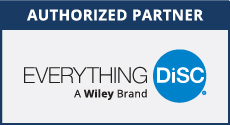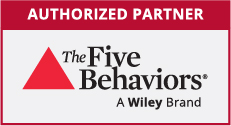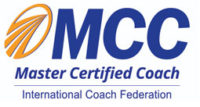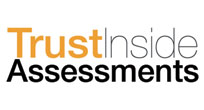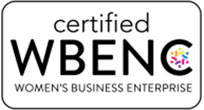People-Whispering Tip: Antidotes for the Five Team Dysfunctions
DiSC Assessment Application: The Five Behaviors of a Cohesive Team, Five Behaviors of a Cohesive Team Product Briefings Across the Country, Everything DiSC Virtual Certification, and The Work of Leaders Book
Transformational Coaching Tip: Tips for Championing Execution Through Structure
People-Whispering Tip:
“The antidotes for worry are gratitude, action, and service.” Jonathan Lockwood Huie
“Gentleness is the antidote for cruelty.” Phaedrus
Antidotes for the Five Team Dysfunctions
Wouldn’t it be great if there were a magic pill that would make people work together more effectively? Would that it were so easy to develop a high-performing, happily functioning, fabulous team!
Well, I cannot offer the magic pill, but I can offer you some leadership antidotes to the typical five dysfunctions of a team outlined by Patrick Lencioni.
Generally, we think of an antidote as a medicine or potion or other remedy for counteracting the effects of poison or disease. But the meaning of the word also encompasses something that prevents or counteracts injurious or unwanted effects.
Participating in an unhealthy corporate culture with dysfunctional team dynamics is a kind of poison. And as many of us have experienced or witnessed, it only takes a little of this poisonous, negative energy to “kill” employee engagement and productivity. Dysfunctional team behavior certainly does not contribute to a healthy organizational culture where people thrive personally and professionally. Not surprisingly, the research shows that the companies with unhealthy corporate cultures suffer financially as well.
To begin improving your team’s performance, you must first understand where you and your team are dysfunctional so that you can work on changing behavior and create a culture that will enhance your team’s performance.
The new facilitative process “The Five Behaviors of a Cohesive Team” co-created by Patrick Lencioni and Everything DiSC by Wiley will assist you in doing just that.
Let’s look at each of the dysfunctions and its associated “magical” antidote.
Dysfunction #1: Lack of Trust
This is where the rubber meets the road when it is not present. Trust is the essential ingredient to a healthy, happy, effective team. The symptoms are politicking and team members who are unwilling to admit their mistakes and/or to allow themselves to be appropriately vulnerable with each other. The leader can provide an antidote by appreciating that there are likely people on the team who are smarter than they are in a particular area. When a leader is confident enough to admit they may not know something or that they could be wrong, others will often follow suit and are more willing to be open about their own strengths and shortcomings.
Dysfunction #2: Fear of Conflict and Conflict Avoidance
Symptoms include “yes” people who say one thing and mean another or people who agree but are secretly waiting for the plan to fail since they disagree with it but are afraid to say why. A leader can provide an antidote by creating a team environment where everyone can voice a dissenting opinion without being attacked or dismissed. Once people feel heard and that their suggestions were seriously considered, they are more likely to buy-in even if they still disagree.
Dysfunction #3: Lack of Commitment
Without healthy conflict, it is difficult for team members to commit to decisions. The symptoms are disgruntled people floundering without solid direction and focus. The leader can provide the antidote by allowing an open exchange of ideas, recognizing each individual for their contribution, and then breaking the tie and charting a clear course of action.
Dysfunction #4: Avoidance of Accountability
Without a clear plan of action, one symptom of unhealthy team behavior is a hesitation to hold people accountable. As a leader, your job is to make a decision based upon the input the team members have provided and to ensure buy-in from each person. A leader applies an antidote for avoidance of accountability by creating a safe place for people to commit to the idea and to the deliverables assigned. Better yet, a strong functional team will hold its fellow members accountable to one another so that leadership is shared.
Dysfunction #5: Inattention to Results
As imperfect human beings, we can tend to put our own needs first such that the symptoms are too much ego, a need for individual recognition, etc. at the expense of what the team needs as a whole. The leader’s antidote is to not only be clear on the results expected from the team, but also on the results expected from each team member. When the team functions as a unit, it is like a well-oiled machine or a beautiful flying flock of geese.
What a beautiful thing it is to work on a team like this where the focus is on making high-quality decisions with healthy conflict and commitment. These teams accomplish more in less time and have more fun in the process. You can be the kind of leader who facilitates this kind of climate and culture.
To learn more about how to create healthy teams by applying these team leadership antidotes, call us at 404-327-6330 or email me at Laura@lauraadavis.com.
DiSC® Assessment Application(s)
1) The Five Behaviors of a Cohesive Team is now available!
Best-selling author Patrick Lencioni has joined forces with Wiley (formerly Inscape Publishing) to offer this excellent process for building effective teams.
Teamwork is the lifeblood of an effective organization. Unlocking the code to getting groups of people to work together in high-performing and joyous ways is the key to a profitable and sustainable corporate culture.
The process consists of an individual and team assessment based upon Lencioni’s time-tested, proven model. The accompanying Facilitator Kit walks you through his research-based model to uncover where your team’s strengths and areas for growth and development lie.
To take advantage of this well-designed, time-tested method to unleash your team’s potential, call our office at 404-327-6330 or email Laura@lauraadavis.com.
2) Five Behaviors of a Cohesive Team Product Briefing near you!
Wiley VP Julie Straw will be hitting the road this summer to conduct a series of product briefings about “The Five Behaviors of a Cohesive Team.”
To register for one of these sessions, please call us at 404-327-6330 or email Laura at Laura@lauraadavis.com.
At these breakfast and morning educational sessions (from 8 AM to 10 AM), you will walk away with:
- A high-level overview of The Five Behaviors Model
- Insights from the team assessment that you can apply to your own team and organization
- Real-life examples from the companies who have used The Five Behaviors of a Cohesive Team as their competitive advantage
- Patrick Lencioni’s New York Time best-selling ebook The Five Dysfunctions of a Team
Don’t miss these special events!
| Minneapolis, MN | June 4, 2014 |
| Austin, TX | June 9, 2014 |
| Houston, TX | June 10, 2014 |
| Dallas, TX | June 11, 2014 |
| Atlanta, GA | July 16, 2014 |
| Grand Rapids, MI | July 22, 2014 |
| Detroit, MI | July 24, 2014 |
| Springfield, MA | August 13, 2014 |
| San Diego, CA | August 21, 2014 |
| Los Angeles, CA | August 20, 2014 |
| King of Prussia, PA | September 10, 2014 |
3) Everything DiSC Virtual Certification Is Here!
Do you:
- Wish you had the secret decoder ring to get along with your boss, your coworkers, and even your significant other, family members, and friends?
- Want to deepen your knowledge and understanding of human nature?
- Feel conversant in the DiSC Model so that you can connect easily, solve problems together, and work through conflicts with anyone even those “difficult” people at work?
- Know how to approach people and relate to them according to their needs?
- Convince, influence, or lead others in the best possible way?
- Work cooperatively as a team member?
An understanding of DiSC can help you in all of these areas.
The new Virtual Certification program is here! Please check your inbox as we will be sending you the complete details about how you can participate.
You must register through me so if you are interested or know someone at your company who would be, please call us at 404-327-6330 or email me at Laura@lauraadavis.com.
4) The Work Leaders: How Vision, Alignment and Execution Will Change the Way You Lead by Julie Straw, Mark Scullard, Susie Kukkonen, and Barry Davis
Recall this book from my friends and colleagues at Wiley introduces the Vision-Alignment-Execution model which synthesizes the 3 fundamental responsibilities all leaders have. Leaders must craft a vision, build alignment, and champion execution. Of course, there is a lot of skill required in each of these areas which is what the book is all about. First a few definitions are in order:
- Crafting a Vision: imagining an improved future state that the group will make a reality through its work.
- Building Alignment: getting to the point where everyone in the group understands and is committed to the direction of the organization.
- Championing Execution: ensuring that the conditions are present for the imagined future to be turned into a reality.
Stay tuned for future webinars and trainings which will delve into the VAE model so you will know how you can begin to apply it to your leadership challenges.
For more on how to increase your organization’s effectiveness using the Work of Leaders profile and/or training materials, please call us at 404-327-6330 or email me at Laura@lauraadavis.com.
.jpg)
The Work of Leaders book recently released by Wiley
Transformational Coaching Tip:
Championing Execution Through Structure
Since I am highlighting the Work of Leaders book in this ezine, I thought it might be helpful to take each driver for each aspect of the VAE model in turn and offer some tips for how to implement it in the real world. Stay tuned for future editions of this ezine to learn about the other drivers to master in your leadership journey.
The three drivers of Championing Execution are Momentum, Structure, and Feedback.
Championing Execution is relevant at all levels of an organization. The second driver of championing execution is Structure. These tips can be found on page 134 of the book.
Tips for Structure:
- Involve the people who will actually be doing the work in the planning process.
- Ensure that plans are robust and sharply focused.
- Expect planning to be an iterative process.
- Create an environment in which there is consistent and timely communication across functions.
- Think critically about what might happen and what has happened.
- Allow time for planning and doing the analysis.
For assistance in applying any of these best practices into your workplace for more powerful, effective results, feel free to call us at 404-327-6330 or email Laura at Laura@lauraadavis.com.


